Modeling and Initialization of Nonlinear and Chaotic Fractional Order Systems Based on the Infinite State Representation
Abstract
:1. Introduction
- The history function technique of Lorenzo and Hartley [30], which is an input/output approach that avoids the definition of state variables;
- The infinite state representation of Trigeassou and Maamri [31], which is directly related to an infinite dimension distributed state variable and permits us to take into account the long memory phenomenon.
2. Materials and Methods: The Fractional Integrator
2.1. Riemann–Liouville Integration
2.2. The Distributed Fractional Integrator Model
2.3. Transients of the Fractional Integrator [35]
- is the free response of the fractional integrator initialized by the distributed initial conditions ;
- is the forced response of the fractional integrator caused by the input .
2.4. The Finite Dimension Approximation
3. Modeling of a Fractional Order Nonlinear System
3.1. Elementary Nonlinear System
- A linear one, corresponding to the integer order distributed model of the fractional integrator;
- A nonlinear one corresponding to the function .
3.2. General Case: Fractional Order Nonlinear System
4. Finite Dimension Modeling and Initialization of an Elementary Nonlinear System
4.1. Finite Dimension Modeling
4.2. Simulation and Initialization of the Nonlinear System
4.3. Concluding Remark
- A compact one like (12 or 15) related to the pseudo-state variables (with specific mathematical tools like the Mittag–Leffler function and the G.L. simulation technique), praised by a majority of fractional researchers with an explicit reference to the Caputo derivative, which is not adapted to a true state space formalism, particularly to solve initialization problems;
- A frequency distributed one, like (14 or 16), characterized by an infinite dimension set of integer order differential equations, where the distributed state variable is adapted to conventional state space formalism, allowing the solution of initialization problems with the usual mathematical tools of system theory.
5. Modeling and Initialization of a Fractional Chaotic System
5.1. Introduction
5.2. Modeling of the Chen System
5.3. Simulation and Initialization of the Chen System
6. Quantification of Initialization Sensitivity
6.1. Experimental Approach
6.2. Determination of Lyapunov Exponents with the G.S. Spectrum Algorithm
6.3. Concluding Remark
7. Conclusions
Author Contributions
Funding
Data Availability Statement
Conflicts of Interest
Appendix A. Fractional Integrator—Numerical Algorithm
Appendix B. Principle of the G.S. Spectrum Algorithm
References
- Khalil, H.K. Non Linear Systems; Prentice Hall: Hoboken, NJ, USA, 1996. [Google Scholar]
- Slotine, J.J.E.; Li, W. Applied Nonlinear Control; Prentice Hall: Upper Saddle River, NJ, USA, 1991. [Google Scholar]
- Sastry, S. Nonlinear Systems; Springer: New York, NY, USA, 1999. [Google Scholar]
- Lorenz, E.N. Deterministic non-periodic flow. J. Atmos. Sci. 1963, 20, 130–141. [Google Scholar] [CrossRef]
- Cuomo, K.M.; Oppenheim, A.V. Circuit implementation of synchronized chaos with applications to communications. Phys. Rev. Lett. 1993, 71, 65–68. [Google Scholar] [CrossRef] [PubMed]
- Eroglu, D.; Lamb, J.S.W.; Pereira, T. Synchronization of chaos and its applications. Contemp. Phys. 2017, 58, 207–243. [Google Scholar] [CrossRef]
- Kailath, T. Linear Systems; Prentice Hall Inc.: Englewood Cliffs, NJ, USA, 1980. [Google Scholar]
- Ghys, E. The Butterfly Effect. In Proceedings of the 12th International Congress on Mathematical Education: Intellectual and attitudinal challenges, Seoul, Republic of Korea, 8–15 July 2012; Springer International Publishing: Berlin/Heidelberg, Germany, 2012. [Google Scholar]
- Poincaré, H. Sur le problème des trois corps et les équations de la dynamique. Acta Math. 1890, 13, 1–270. [Google Scholar]
- Li, T.Y.; Yorke, J.A. Period three implies chaos. Am. Math. Mon. 1975, 82, 985–992. [Google Scholar] [CrossRef]
- Tucker, W. The Lorenz attractor exists. Comptes Rendus De L’académie Des Sci.-Ser. I-Math. 1999, 328, 1197–1202. [Google Scholar] [CrossRef]
- Strogatz, S.H. Nonlinear Dynamics and Chaos; Westview Press: Boulder, CO, USA, 1994. [Google Scholar]
- Hartley, T.T.; Lorenzo, C.F.; Qammer, H.K. Chaos on a fractional Chua’s system. IEEE Trans. Circuits Syst. I Fundam. Theory Appl. 1995, 42, 485–490. [Google Scholar] [CrossRef]
- Petras, I. Fractional Order Nonlinear Systems; Springer: Heidelberg, Germany, 2011. [Google Scholar]
- Danca, M.F.; Chen, G. Bifurcation and Chaos in Fractional Order Systems; Special Issue of Symmetry; MDPI: Basel, Switzerland; 108p.
- Pecora, L.M.; Carroll, T. Synchronization in chaotic systems. Phys. Rev. Lett. 1990, 64, 821–824. [Google Scholar] [CrossRef]
- Pecora, L.M.; Carroll, T.; Johnson, G.A.; Mar, D.J.; Heagy, J.F. Fundamentals of synchronization in chaotic systems, concepts and applications. Chaos 1997, 7, 520–543. [Google Scholar] [CrossRef]
- Trigeassou, J.C.; Maamri, N. Analysis, Modeling and Stability of Fractional Order Differential Systems—The Infinite State Approach; John Wiley and Sons: Hoboken, NJ, USA, 2019; Volumes 1–2. [Google Scholar]
- Tarasov, V.E. No nonlocality, no fractional derivative. Commun. Nonlinear Sci. Numer. Simulat. 2018, 62, 157–163. [Google Scholar] [CrossRef]
- Caputo, M. Elasticita e Dissipazione; Zanichelli: Bologna, Italy, 1969. [Google Scholar]
- Podlubny, I. Fractional Differential Equations; Academic Press: San Diego, CA, USA, 1999. [Google Scholar]
- Diethelm, K. The Analysis of Fractional Differential Equations; Lecture Notes in Mathematics; Springer: Berlin, Germany, 2010. [Google Scholar]
- Fukunaga, M.; Shimizu, N. Role of pre-histories in the initial value problems of fractional viscoelastic equations. Non Linear Dyn. 2004, 38, 207–220. [Google Scholar] [CrossRef]
- Hartley, T.T.; Lorenzo, C.F. The error incurred in using the Caputo derivative Laplace transform. In Proceedings of the ASME IDET-CIE Conferences, San Diego, CA, USA, 30 August–2 September 2009. [Google Scholar]
- Sabatier, J.; Merveillaut, M.; Malti, R.; Oustaloup, A. How to impose physically coherent initial conditions to a fractional system? Commun. Non Linear Sci. Numer. Simul. 2010, 15, 1318–1326. [Google Scholar] [CrossRef]
- Du, M.; Wang, Z. Correcting the initialization of models with fractional derivatives via history dependent conditions. Acta. Mech. Sin. 2016, 32, 320–325. [Google Scholar] [CrossRef]
- Du, B.; Wei, Y.; Liang, S.; Wang, Y. Estimation of exact initial states of fractional order systems. Nonlinear Dyn. 2016, 86, 2061–2070. [Google Scholar] [CrossRef]
- Zhao, Y.; Wei, Y.; Chen, Y.; Wang, Y. A new look at the fractional initial value problem: The aberration phenomenon. ASME J. Comput. Nonlinear Dyn. 2018, 13, 121004. [Google Scholar] [CrossRef]
- Balint, A.M.; Balint, S. Mathematical description of the ground water flow and that of the impurity spread, which use Caputo or Riemann-Liouville fractional partial derivatives, is non objective. Fractal. Fract. 2020, 4, 36. [Google Scholar] [CrossRef]
- Hartley, T.T.; Lorenzo, C.F. The initialization response of linear fractional order system with constant history function. In Proceedings of the International Design Engineering Technical Conferences and Computers and Information in Engineering Conference, San Diego, CA, USA, 30 August–2 September 2009. [Google Scholar]
- Trigeassou, J.C.; Maamri, N.; Oustaloup, A. The infinite state approach: Origin and necessity. Comput. Math. Appl. 2013, 66, 892–907. [Google Scholar] [CrossRef]
- Hartley, T.T.; Lorenzo, C.F.; Trigeassou, J.C.; Maamri, N. Equivalence of history function based and infinite dimensional state initializations for fractional order operators. ASME J. Comput. Nonlinear Dyn. 2013, 8, 041014. [Google Scholar] [CrossRef]
- Maamri, N.; Trigeassou, J.C. A plea for the integration of fractional differential systems: The initial value problem. Fractal Fract. 2022, 6, 550. [Google Scholar] [CrossRef]
- Picard, E. Mémoire sur la théorie des équations aux dérivées partielles et la méthode des approximations successives. J. Mathématiques Pures Et Appliquées 4ème Série Tome 1890, 6, 145–210. [Google Scholar]
- Trigeassou, J.C.; Maamri, N.; Sabatier, J.; Oustaloup, A. State variables and transients of fractional order differential systems. Comput. Math. Appl. 2012, 64, 3117–3140. [Google Scholar] [CrossRef]
- Montseny, G. Diffusive Representation of Pseudo Differential Time Operators; LAAS: Toulouse, France, 1998; Volume 5, pp. 159–175. [Google Scholar]
- Heleschewitz, D.; Matignon, D. Diffusive realizations of fractional integro-differential operators: Structural analysis under approximation. In Proceedings of the Conference IFAC, System, Structure and Control, Nantes, France, 8–10 July 1998; Volume 2, pp. 243–248. [Google Scholar]
- Sabatier, J. Fractional state space description: A particular case of the Volterra equations. Fractal Fract. 2020, 4, 23. [Google Scholar] [CrossRef]
- Oustaloup, A. La Commande CRONE; Hermès: Paris, France, 1991. [Google Scholar]
- Curtain, R.F.; Zwart, H.J. An Introduction to Infinite Dimensional Linear Systems Theory; Springer: New York, NY, USA, 1995. [Google Scholar]
- Trigeassou, J.C.; Maamri, N.; Sabatier, J.; Oustaloup, A. A Lyapunov approach to the stability of fractional differential equations. Signal Process. 2011, 91, 437–445. [Google Scholar] [CrossRef]
- Wang, B.; Ding, J.; Wu, F.; Zhu, D. Robust finite time control of fractional order nonlinear systems via frequency distributed model. Nonlinear Dyn. 2016, 85, 2133–2142. [Google Scholar] [CrossRef]
- Hinze, M.; Schmidt, A.; Leine, R.L. The direct method of Lyapunov for nonlinear dynamical systems with fractional damping. Nonlinear Dyn. 2020, 102, 2017–2037. [Google Scholar] [CrossRef]
- Maamri, N.; Trigeassou, J.C. Modeling and initialization of fractional order nonlinear systems: The infinite state approach. In Proceedings of the IEEE ICSC Conference, Marseille, France, 23–25 November 2022. [Google Scholar]
- Tari, M.; Maamri, N.; Trigeassou, J.C. Initial conditions and initialization of fractional systems. ASME J. Comput. Nonlinear Dyn. 2016, 11, 041014. [Google Scholar] [CrossRef]
- Chen, G.; Ueta, T. Yet another chaotic attractor. Int. J. Bifurc. Chaos 1999, 9, 1465–1466. [Google Scholar] [CrossRef]
- Lü, J.; Chen, G. A new chaotic attractor coined. Int. J. Bifurc. Chaos 2002, 12, 659–661. [Google Scholar] [CrossRef]
- Zhou, T.; Tang, Y.; Chen, G. Chen’s attractor exists. Int. J. Bifurc. Chaos 2004, 14, 3167–3177. [Google Scholar] [CrossRef]
- Sandri, M. Numerical calculation of Lyapunov exponents. Math. J. 1996, 6, 78–83. [Google Scholar]
- Quarteroni, A.; Sacco, R.; Saleri, F. Méthodes Numériques; Springer: Milano, Italy, 2007. [Google Scholar]
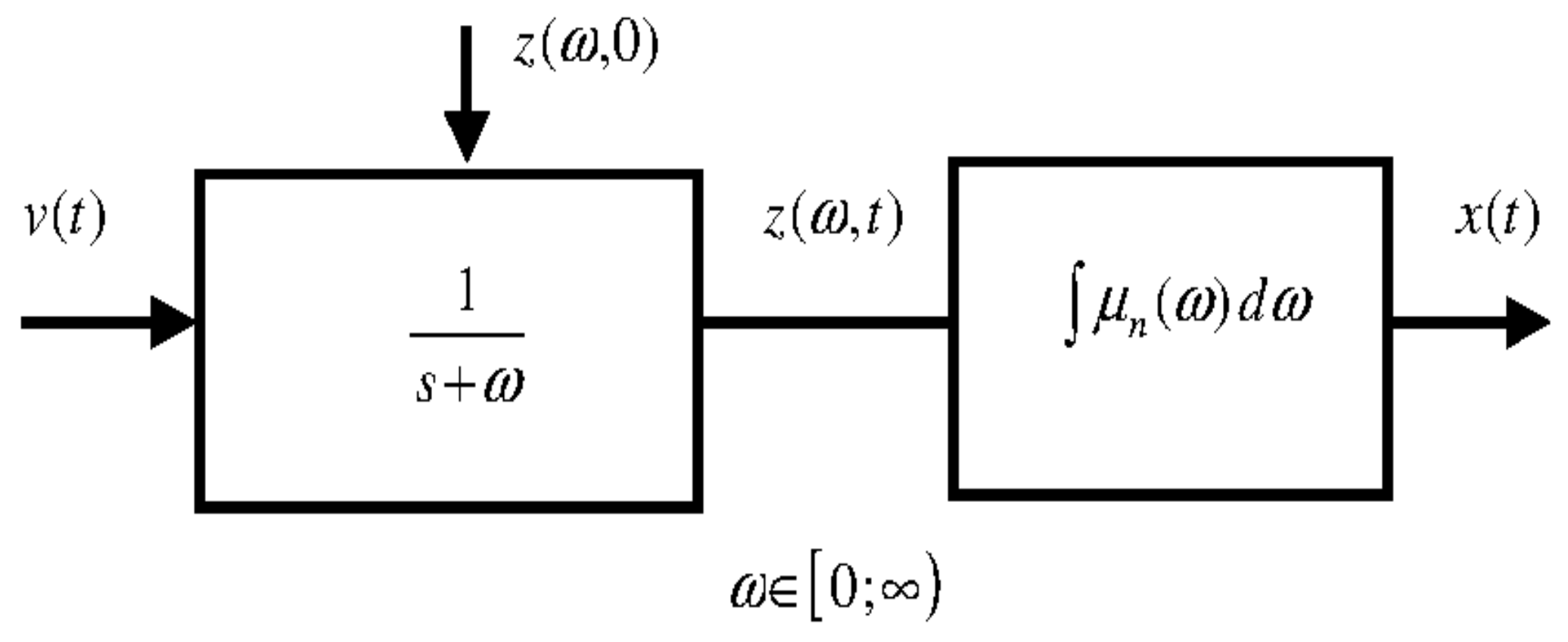
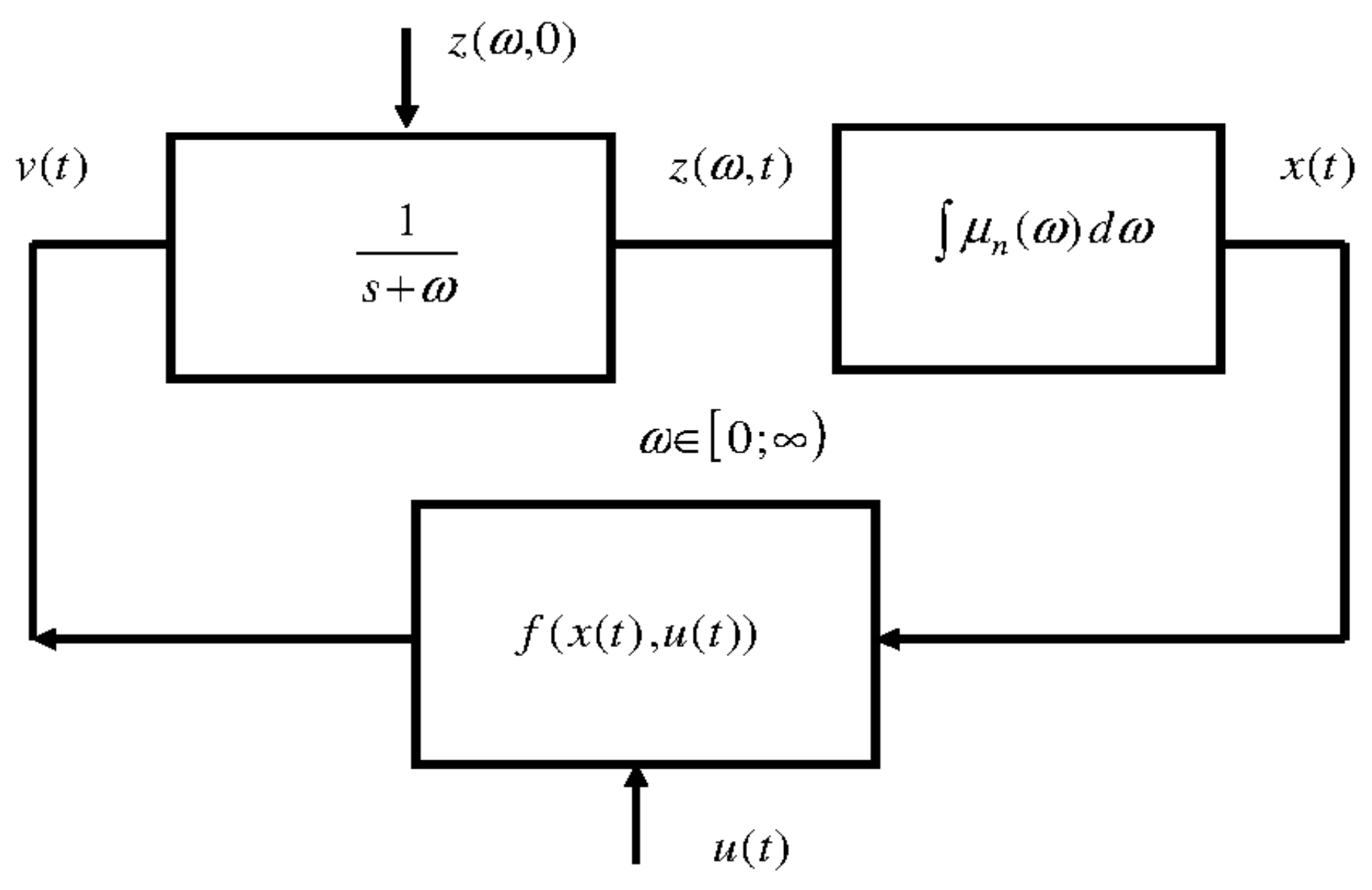
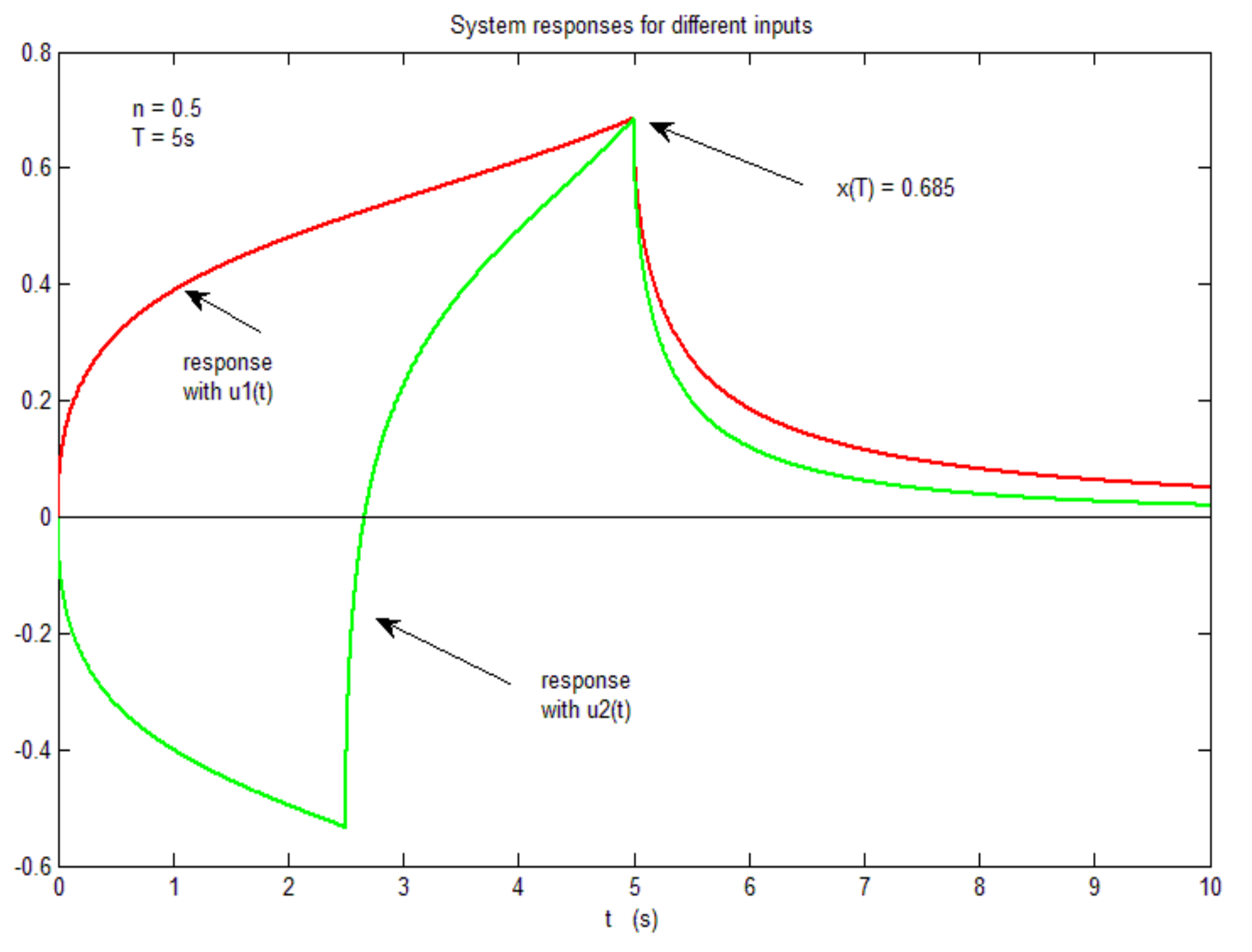


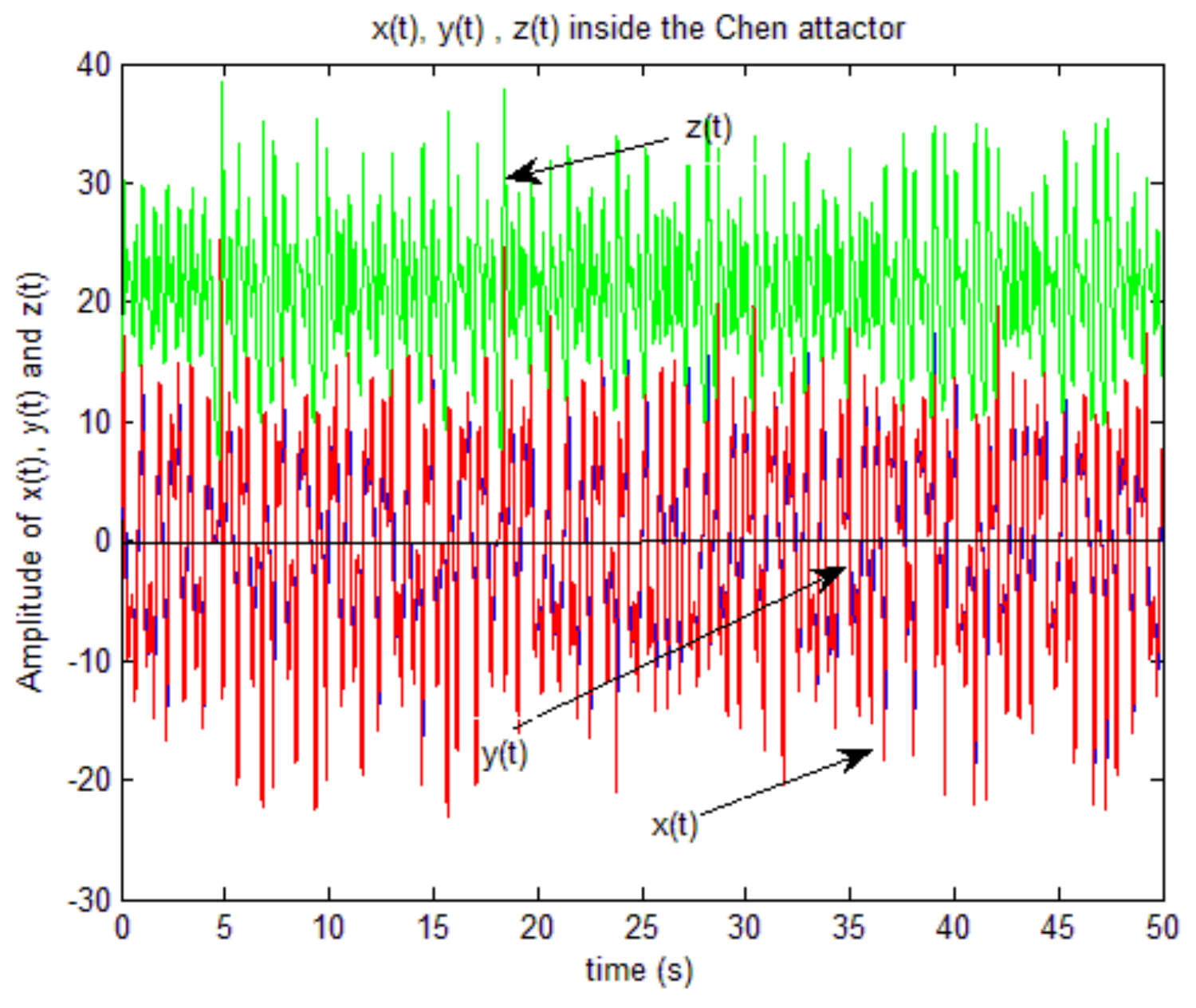
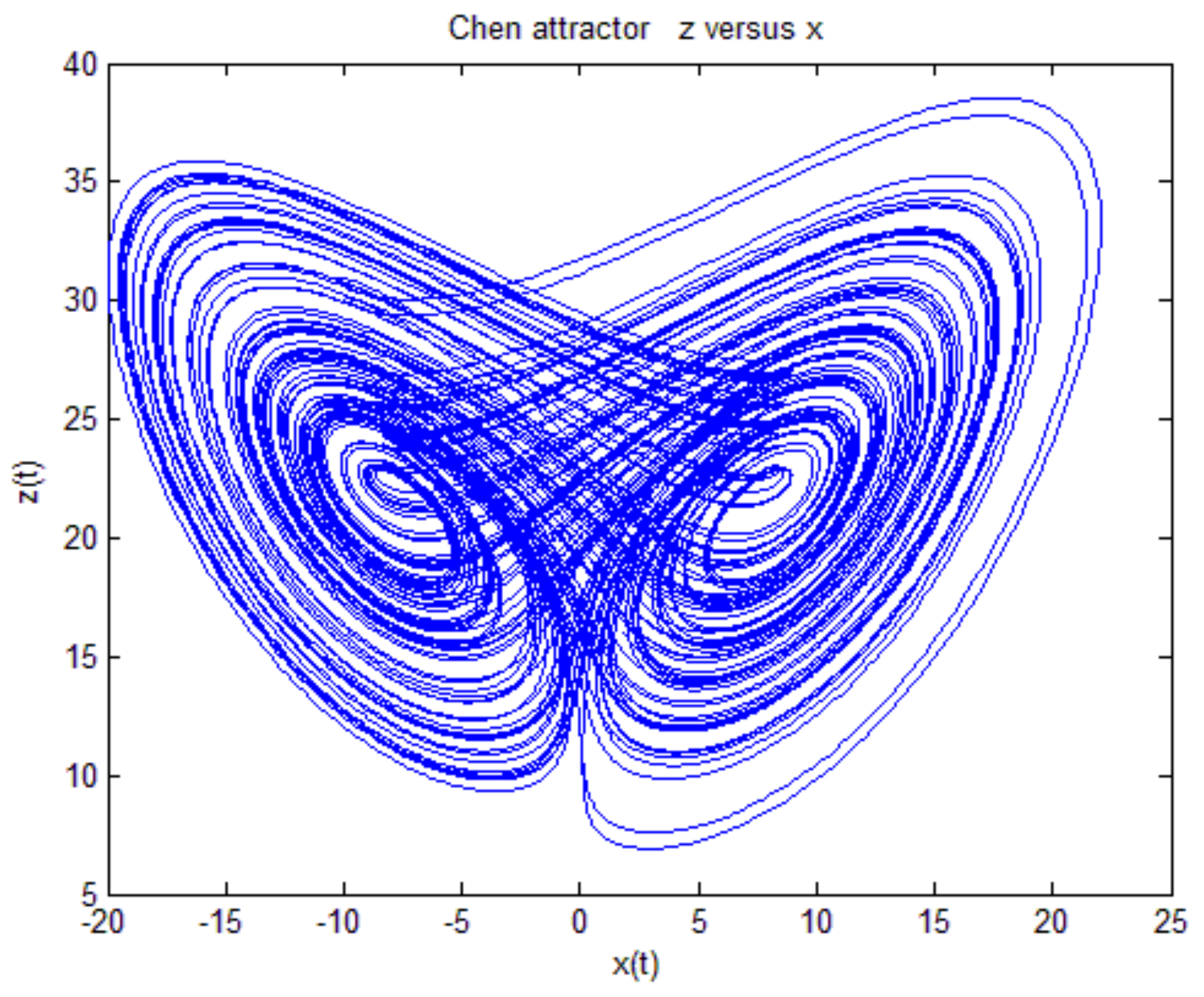

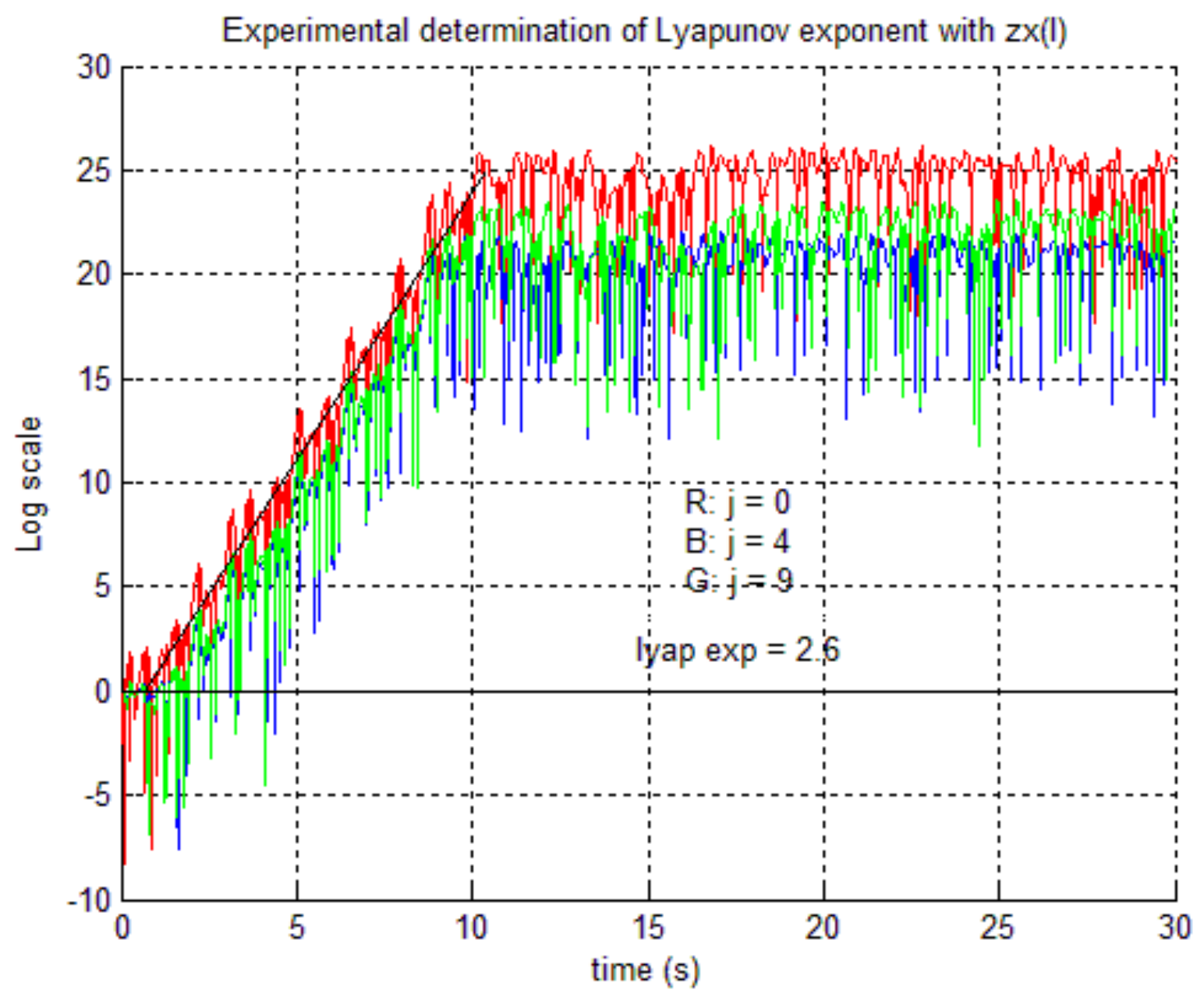
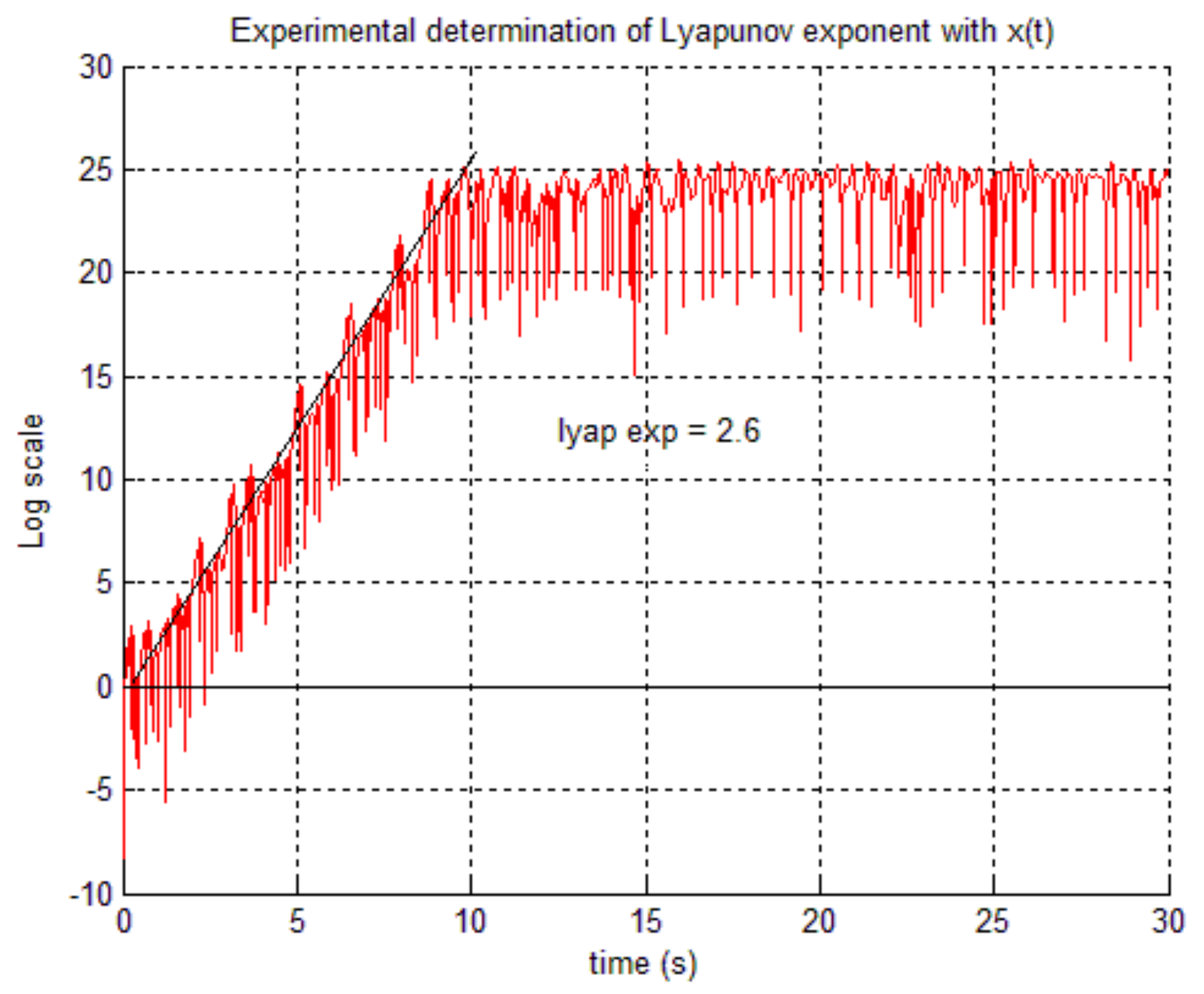

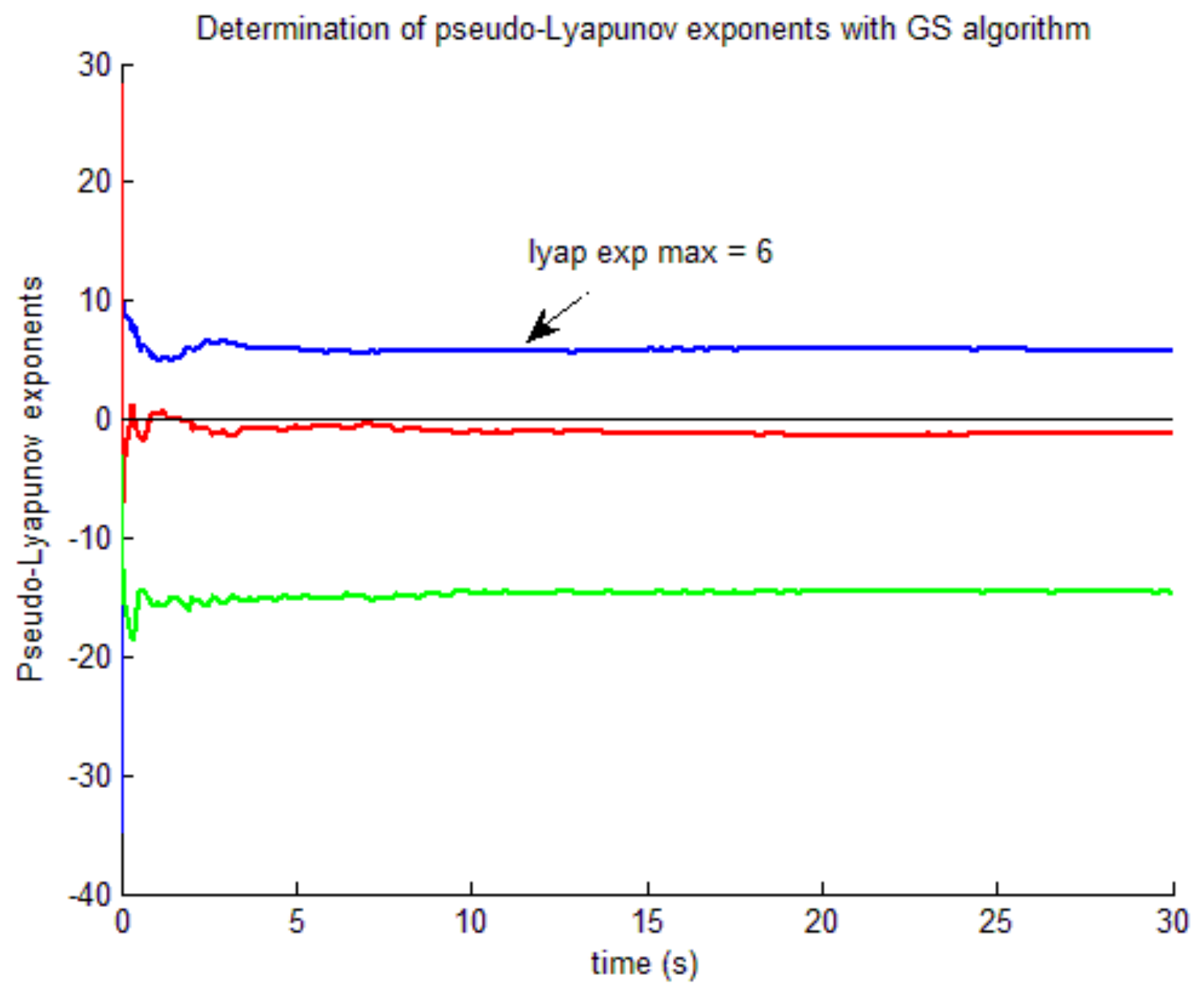
| i | 1 | 2 | 3 | 4 | 5 | 6 | 7 | 8 | 9 | 10 |
|---|---|---|---|---|---|---|---|---|---|---|
| lyap exp | 2.6831 | −0.0025 | −0.0038 | −0.0065 | −0.0119 | −0.0228 | −0.0443 | −0.0873 | −0.1726 | −0.3421 |
Disclaimer/Publisher’s Note: The statements, opinions and data contained in all publications are solely those of the individual author(s) and contributor(s) and not of MDPI and/or the editor(s). MDPI and/or the editor(s) disclaim responsibility for any injury to people or property resulting from any ideas, methods, instructions or products referred to in the content. |
© 2023 by the authors. Licensee MDPI, Basel, Switzerland. This article is an open access article distributed under the terms and conditions of the Creative Commons Attribution (CC BY) license (https://creativecommons.org/licenses/by/4.0/).
Share and Cite
Trigeassou, J.-C.; Maamri, N. Modeling and Initialization of Nonlinear and Chaotic Fractional Order Systems Based on the Infinite State Representation. Fractal Fract. 2023, 7, 713. https://doi.org/10.3390/fractalfract7100713
Trigeassou J-C, Maamri N. Modeling and Initialization of Nonlinear and Chaotic Fractional Order Systems Based on the Infinite State Representation. Fractal and Fractional. 2023; 7(10):713. https://doi.org/10.3390/fractalfract7100713
Chicago/Turabian StyleTrigeassou, Jean-Claude, and Nezha Maamri. 2023. "Modeling and Initialization of Nonlinear and Chaotic Fractional Order Systems Based on the Infinite State Representation" Fractal and Fractional 7, no. 10: 713. https://doi.org/10.3390/fractalfract7100713
APA StyleTrigeassou, J.-C., & Maamri, N. (2023). Modeling and Initialization of Nonlinear and Chaotic Fractional Order Systems Based on the Infinite State Representation. Fractal and Fractional, 7(10), 713. https://doi.org/10.3390/fractalfract7100713






